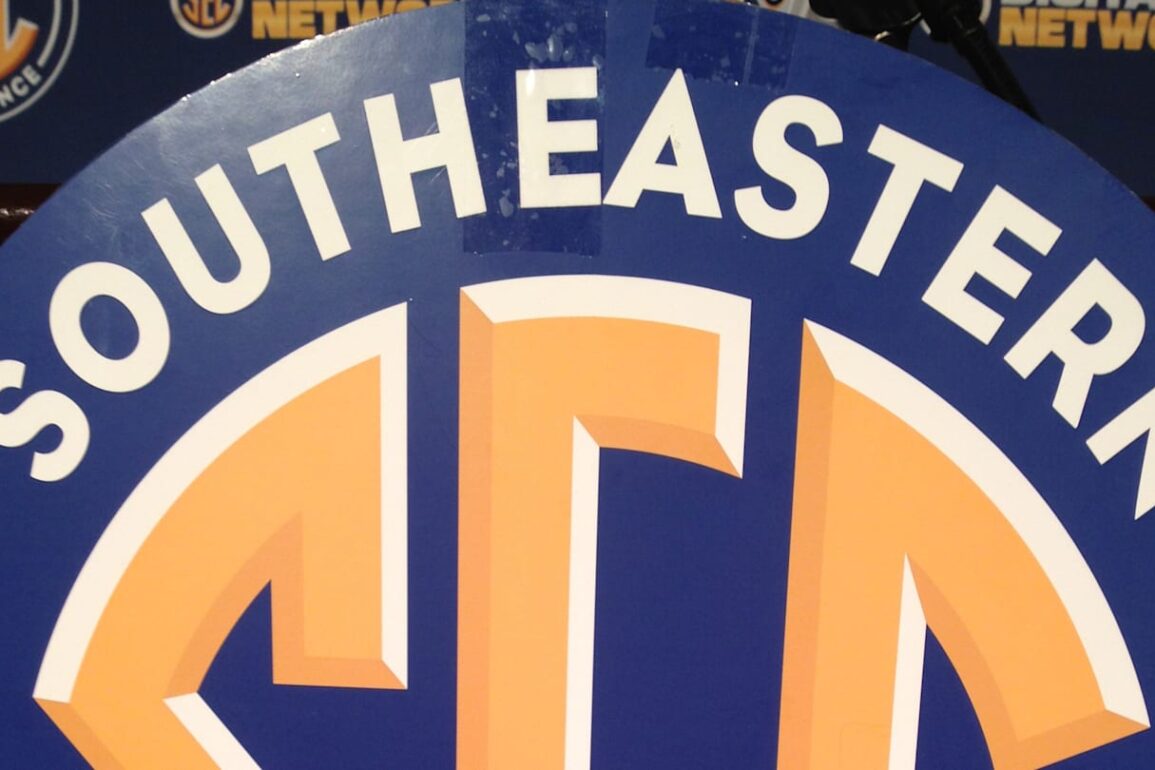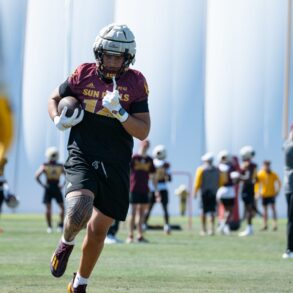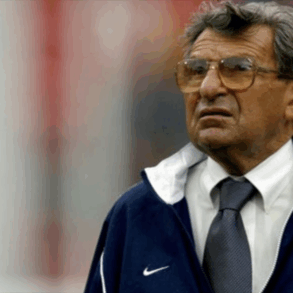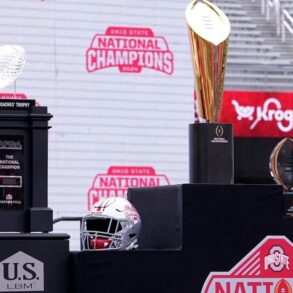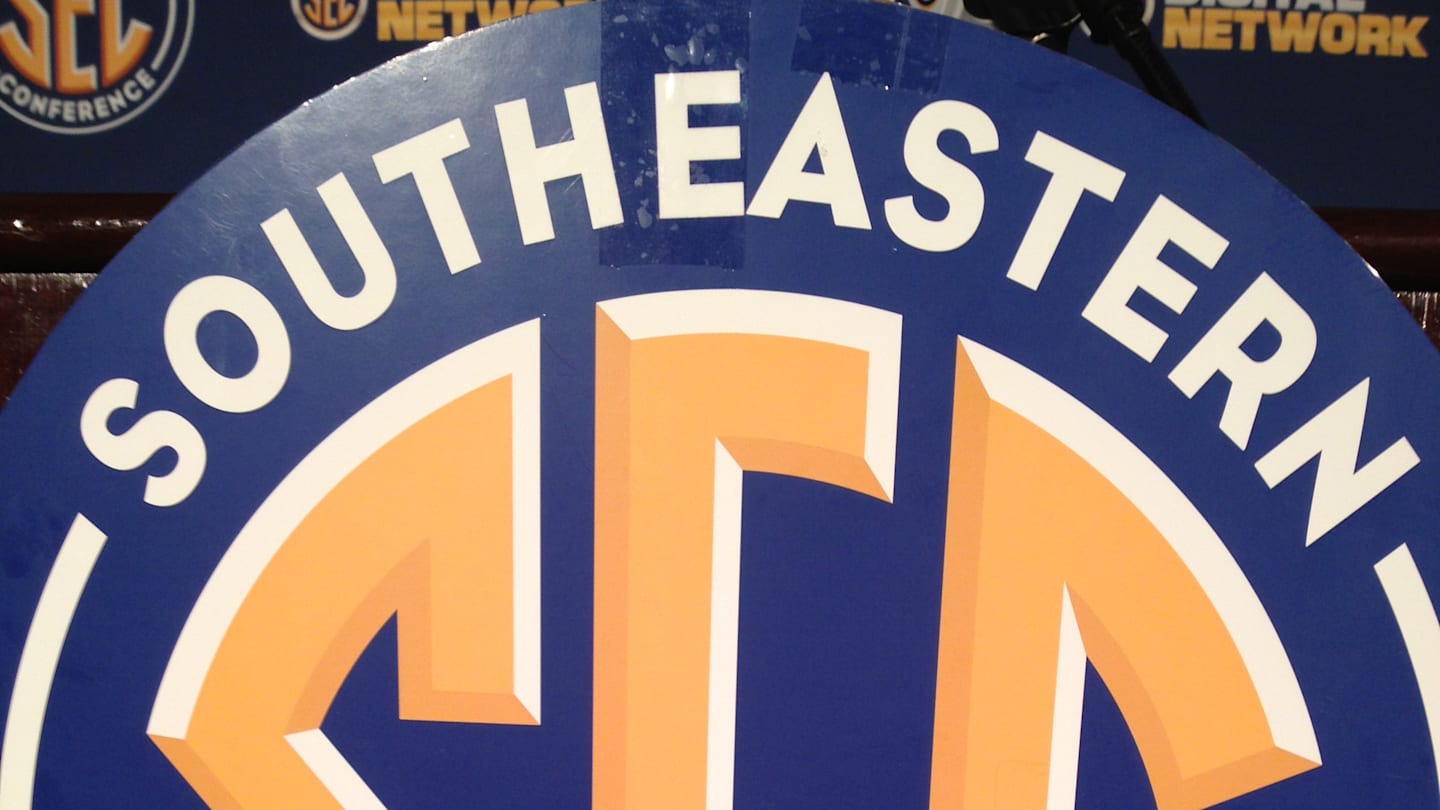
A quote from legendary Missouri men’s basketball player John Brown came to mind this week, but not necessarily in the way that he intended.
Let me backtrack for a moment. Mississippi State athletic director Zac Selmon is already feeling the heat in Starkville after recently firing the only baseball coach to win a national championship, Chris Lemonis, and his first-year head football coach Jeff Lebby went 2-10 with the only wins against Eastern Kentucky and UMass. So maybe he was looking for a bit of a distraction, or knows the Bulldogs need all the help they can get, when saying last week that he was in favor of having play-in games for an expanded College Football Playoff.
“Exciting competition is exciting competition, and I’ve always been a fan for access, but also for the fan bases, more play-ins,” Selmon said. “You look at what the NBA has done and other leagues — having hope, having excitement late in the season — I love the concepts of just having more opportunities and also having some more things on the line.
“I think [from a mental standpoint] it helps the student-athlete having more things to play for late in the season.” [For more on what Selmon said check out Mississippi State On SI]
First off, does anyone really like the play-in concept of the NBA? Sure, you might watch it a little, but you don’t hear anyone say that what they really want more of is seeing two teams with mediocre seasons square off to see who gets drilled in the next round. There’s way too much of that going on nowadays.
Second, maybe it creates a little more late-season excitement for some teams, but it also dilutes the regular season and doesn’t reward the teams at the top of the standings.
That’s why something Brown said came to mind, and it applies to the landscape of college athletics as a whole and not the sport he played. If you’re not familiar with him, the forward was an All-American who was the 10th-overall pick of the 1973 NBA Draft, who’s No. 50 was retired at Mizzou. He was selected to the 1972 Olympic Team, but couldn’t play due to an injury.
“I only watch the [NBA] playoffs, because that’s when the intensity doubles,” he said. “The only regular-season games I want to see is if there is a guy from college I want to see, a rookie.”
This is what college athletics are in danger of becoming. The idea of adding play-in games would probably mean expanding the CFP more than once. We all know it’s going to go to 16 teams as soon as possible, probably 2026, but is adding play-in games on top of that to chase a few more dollars really worthwhile, especially when few, if any of the teams would have a chance to advance more than one game in that format?
That’s not picking a side in this continuing power struggle that doesn’t seem to care much about the soul of the sport(s), or the well-being of the athletes. It would be nice to think that there’s a nice middle ground to be had because sooner or later the fans are going to start to check out. Some already have.
Consequently, reports of Nick Saban being part of a proposed presidential commission to make recommendations about the future of college football, and college athletics as a whole, raised a lot of eyebrows. As noted here last week he may be the only person who can cut through all the chaos and power grabs without losing sight of what’s good for the game. Moreover, he never does anything halfway, which really makes me want to see who else will be on this panel (it’s almost a given that the more politics play a part, the less successful it will be).
Per Jon Wilner of the San Jose Mercury News, a high-ranking power conference official told him: “If [the commission] can expedite congressional assistance and create pathways for getting big, tangible things done — instead of just calling out problems we already know exist and dusting off their hands — I’m all for it.”
Similarly, NCAA President Charlie Baker told reporters at the ACC spring meetings on Monday: “I’m up for anything that can help us get somewhere,” and, “Creating clarity one lawsuit at a time is just a really bad way to try to move forward.”
Reform is clearly needed, which is apparently the only thing that everyone can agree. So is a vision of what college athletics can and should be, because if it just comes down to money then it’ll simply be embracing all the things college fans say they don’t like about the pros.
Which leads me to the rest of the Brown quote, to a local newspaper/media outlet in 2022, the Phelps County Focus.
“I love college athletics,” he continued. “When I was a pro, they played for themselves and their family like they do now. And I understand that. But they don’t play for the team anymore. In pro basketball now, it’s all about the next contract.”
How disappointing was it to see the SEC simply cancel the championship game of the 2025 SEC Softball Tournament due to lousy weather and not even try to get it in? Granted, the rainy/stormy weather in the region has been ridiculous this spring, and the field conditions could have been horrible, but call me a purist in that if it would have taken a couple days to get the game in then that’s what you do. Play it at midnight, start it at 6 a.m., whatever, even if it came after the selection show for the NCAA Tournament on Sunday.
Of course, the two teams, Texas A&M and Oklahoma, ended up being the top two seeds of the NCAA Tournament (followed by Florida and Arkansas). Had the Sooners won the league tournament would the selection committee switched them? We’ll never know after they were proclaimed league co-champions.
The SEC could have boasted having the toughest college softball tournament anyone had seen (think of it, the top four teams, eight of the top 10, and arguably 13 ranked teams in a single-elimination format). Instead, fans are left wondering why bother having the tournament at all if the title game wasn’t played?
The decision might end up being really bad news for Alabama especially, because you know that Oklahoma coach Patty Gasso will certainly use this as extra motivation, playing the disrespect card during the NCAA Tournament. If both the Crimson Tide and Sooners advance out of their regionals as expected, the four-time reigning national champions will host the matchup in a super regional.
Back in 2018, when Saban was capping his seventh straight recruiting title, I did a breakdown on how many 5-star players from the 2008-13 signing classes had gone on to be drafted, and how many had been first-round selections. Saban’s numbers stood out in a big way as of the 21 5-star talents he landed during those years, 15 (71.4 percent) had been drafted, with nine in the first round (42.9 percent).
Overall, there were 194 players who had been considered consensus 5-star prospects from 2008-13. Among them, only 107 were drafted at all (55.2 percent) and 35 ended up being first-round draft selections (18 percent). Only one other school topped 20 percent for the first-round selections, Florida, while Ohio State and Texas were at zero percent. All of their first-rounders had not been considered 5-star talents.
With that in mind, check out the recent report by On3’s Charles Power about the how top players coming out of the major high school powerhouses aren’t getting drafted like one would expect. Among their 2016-21 prospects he found that 44.8 percent of the 5-star recruits were eventually drafted, and18.1 percent of the 4-star players, both of which were “significantly below” their peers. Overall, 65.4 percent of all 5-star prospects were eventually drafted, and 23.8 percent of all 4-star talents.
This isn’t specific to the SEC, but the NCAA Division I Men’s Basketball Rules Committee made several recommendations for next season that are expected to happen for the 2025-26 season. They include:
• Teams must have a timeout for the coach to use a challenge. If the review is successful, teams are allowed an additional video review challenge for the rest of the game, including overtime. If the review isn’t successful, it loses the ability to challenge the rest of the game.
• Officials can use video review on basket interference, goaltending and restricted arc plays during the last two minutes of the game and into overtime.
• Officials can call a Flagrant 1 foul when a player is contacted in the groin.,
• A player using the rim to gain an advantage is a basket interference violation.
• If a shot clock becomes inoperable, the shot clock at the other basket can remain on.
Committee members also recommended changes to the rule on continuous motion on field-goal attempts.
The women’s committee recommended implementing a coach’s video review challenge for out-of-bounds violations, backcourt violations, whether a change in team possession occurred before a foul was called, and whether a foul was assessed to the correct player. Other suggestions included:
• Setting the shot clock to 20 seconds when, following a dead ball, the offense is awarded the ball in its front court.
• Eliminating the rule that jerseys need to be tucked in.
• Playing with six players when the ball becomes live will be considered a team technical foul.
• Players can complete a jump stop when their feet land approximately at the same time without being called for traveling,
1) The Athletic reported that the ESPN is open to increasing what it pays to the SEC should the league add a ninth game to the football schedule. That might be the final piece to it becoming reality, especially with schools set to pay players under the expected House vs. NCAA settlement. According to tax records released in February, the SEC was already distributing roughly $52.5 million to each school before the additions of Oklahoma and Texas. Meanwhile, USA Today reported that the Big Ten distributed about $63.2 million to each of its 12 longest-standing schools during fiscal year 20204 before adding Southern Cal, Oregon, UCLA, Oregon and Washington.
2) On the other end of Division I, the Football Championship Subdivision oversight committee has recommended bumping up its schedule to a 12-game regular season over 14 weeks, beginning the final weekend of August. The playoff bracket would still be released the Saturday before Thanksgiving, still featuring 24 teams, with the to 16 receiving automatic byes to the second round.
3) How far has the ACC fallen that men’s basketball is moving back to an 18-game league schedule so its top teams can play tougher opponents? It had just four teams make March Madness this year: Clemson, Duke, Louisville, and North Carolina, and the Tar Heels barely made it as the last at-large team. This from the league that boasts “Since 2015, theACC leads all conferences in Men’s Final Four appearances (nine) and NCAA Tournament wins (111), with three national championships.” Meanwhile, the SEC had a record-setting 14 teams make the field of 68.
• Per Sports Business Journal, the company that provides chairback seats to a lot of college football programs, 4Topps, is changing how it does business, and will now sell the seats to the schools (every seven years) so they can directly rent them out to fans. The bottom line is that fans will be charged more and the schools will make more after the first couple of years.
• Don’t count Big West Commissioner Dan Butterly among those in favor of the new governance model proposed by the NCAA last week because it gives too much power to the biggest conferences including the SEC. “This isn’t bold leadership. It’s power consolidation masquerading as progress,” he posted on the league website. “The Big West will not stand by silently.”
• Has anyone checked on Jimbo Fisher in a while and how he’s doing with that $77 million buyout from Texas A&M? Just wondering.
Inside the SEC will appear every Wednesday.
This post was originally published on this site be sure to check out more of their content.




